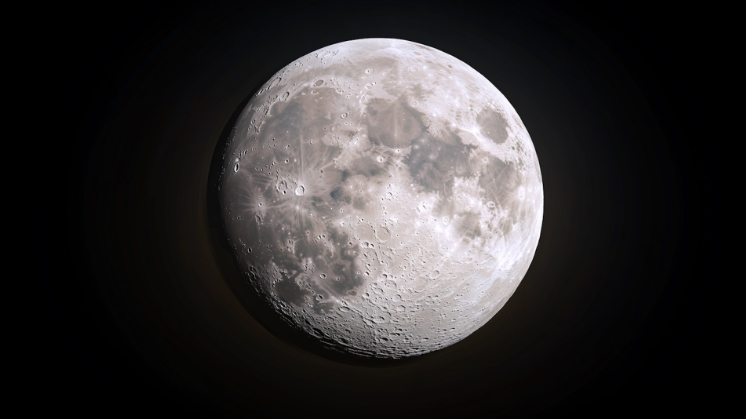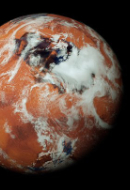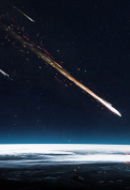Water on the Moon
The discovery of water on the Moon and its impact: from space missions to future colonisation
NASA's Stratospheric Observatory for Infrared Astronomy (SOFIA) recently confirmed the presence of water on the lunar surface, specifically in the sunlit area. In the following lines, we will discuss the many implications of this finding, both for future space missions and for a future colonisation of Earth's natural satellite.

Is there water on the Moon?
Would you like someone to tell you about it? Listen to this article. For those who want to change the world.
The natural satellite of our planet has marked the history of mankind. Aristarchus of Samos calculated its size and distance 23 centuries ago, with an error of only one third of the true value. Later, Galileo Galilei observed it with his telescope and drew the first maps of its craters and mountains. And today, the Moon continues to generate the same mix of curiosity and fascination, with a proliferation of missions, research and discoveries.
Lunar exploration
Exploration of the lunar surface began more than 60 years ago. The Luna 2 module, a probe launched by the Soviet Union, reached the satellite in 1959. But the biggest milestone came ten years later, in 1969, when the US Apollo 11 mission successfully completed the journey that put humans — Neil Armstrong, Buzz Aldrin and Michael Collins — on the Moon for the first time.
During this time, despite the fact that no human has ever set foot on its surface, missions and research have not ceased, many of them linked to speculations on how to inhabit it. The obstacles are many, mainly the lack of water, an essential element for sustaining life on our satellite. However, the recent confirmation of the presence of water on the Moon may give a boost to future lunar colonisation.

Terraforming
If humans were to leave the Earth, what steps would have to be taken?

Meteorite fallen on Earth
How many fall per year and why don't we see them?

Overexploitation of natural resources
What are the consequences of the overexploitation of natural resources?

Space debris
Is it time to start taking care of the cosmos?
The discovery of water on the Moon
As early as 1971, one of the Apollo missions was able to find traces of water on the lunar surface, but only a few diffuse molecules. The Moon does not have enough gravity to hold an atmosphere, which means that in a vacuum water evaporates immediately, in particular, it is solar radiation that breaks water down into hydrogen and oxygen, thus escaping into space.
In 2009, a rocket was sent up and hit the Moon's Cabeus crater at the same time as NASA's Lunar Crater Observation and Sensing Satellite (LCROSS) spacecraft flew through the ejecta plume. LCROSS detected a significant amount of hydroxyl ion (OH), something that could be attributed to the presence of ice in the crater, but also to hydrates, which are inorganic salts containing chemically bound water molecules. Subsequent analysis announced that the water concentration was around 6 %.
How the presence of water on the Moon was detected
The definitive confirmation of the presence of water on the illuminated face of the Moon came in October 2020. In an article External link, opens in new window. published in Nature Astronomy, a team of scientists used SOFIA (Stratospheric Observatory for Infrared Astronomy), an infrared telescope mounted inside a 747 jumbo jet, to detect the presence of water, no longer in the crevices and shadows of craters, but in parts of the Moon where the sun shines.
External link, opens in new window. published in Nature Astronomy, a team of scientists used SOFIA (Stratospheric Observatory for Infrared Astronomy), an infrared telescope mounted inside a 747 jumbo jet, to detect the presence of water, no longer in the crevices and shadows of craters, but in parts of the Moon where the sun shines.
The SOFIA observatory and the confirmation of the existence of water on the Moon
Water on the moon may be more abundant and accessible than initially thought, a discovery by the SOFIA observatory that could be important for future lunar missions.
What were the SOFIA discoveries?
-
Molecular water unambiguously detected on the surface, trapped in bubbles of lunar glass or between grains of impact debris.
-
About 40,000 km2 of permanent shadows (or cold traps) could harbour hidden pockets of water in the form of ice.
The Stratospheric Observatory for Infrared Astronomy (SOFIA) is a modified Boeing 747 that functions as a flying observatory:
The fuselage door opens to reveal a telescope in an unpressurised compartment and the aircraft's altitude allows infrared observation above the layer of water vapour that obscures the atmosphere.
Source: NASA and DLR (German Aerospace Center).
 SEE INFOGRAPHIC: The SOFIA observatory and the confirmation of the existence of water on the moon [PDF] External link, opens in new window.
SEE INFOGRAPHIC: The SOFIA observatory and the confirmation of the existence of water on the moon [PDF] External link, opens in new window.
The information obtained by SOFIA can be used not only to expand knowledge about the Moon and its natural resources, but also to support future manned missions to the Moon. The main projects organised by NASA are being prepared in the framework of the Artemis project, a space programme that aims to send the next human being to the lunar surface and to set up a permanent base on the satellite to support future manned missions, such as the one planned for Mars in 2030.
Where there is water on the Moon
For a long time it was thought that water on the Moon was found only in the shaded areas near the lunar poles. Some deep craters near the poles are permanently in shadow, which would have allowed water to accumulate there in the form of ice sheets over millions of years. SOFIA's discovery reveals that the water could be distributed over the entire lunar surface, as the detected water is stored in bubbles of lunar glass or between grains of lunar dust, which are shielded from radiation.
Why there is water on the Moon
Lunar water has two possible origins. On the one hand, comets and other celestial bodies that hit the Moon carry water in the form of ice. On the other hand, there is some production of water on the surface. Theoretically, the latter occurs when hydrogen ions from the solar wind combine chemically with oxygen atoms in lunar minerals, causing hydroxyl (OH) groups to form between the crystals of rock minerals and between bubbles in lunar glass. In shaded areas, on the other hand, water is stored in the form of ice.








